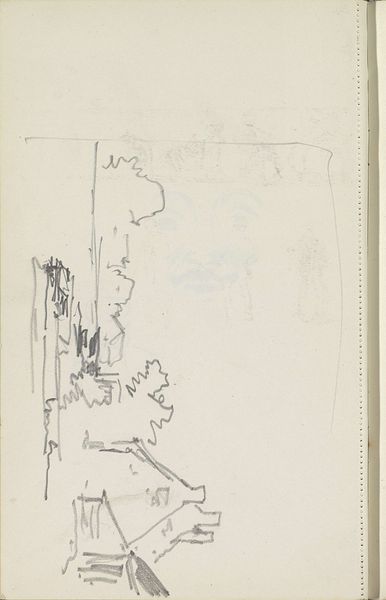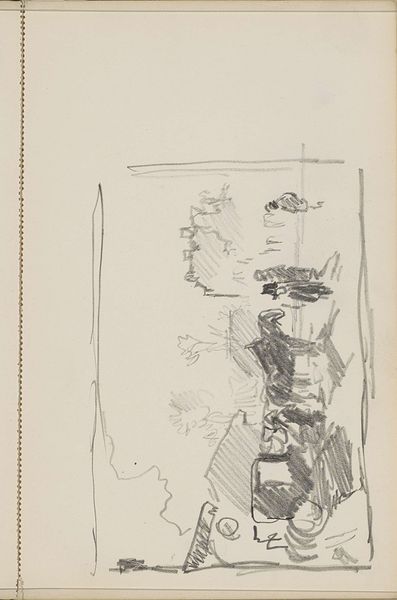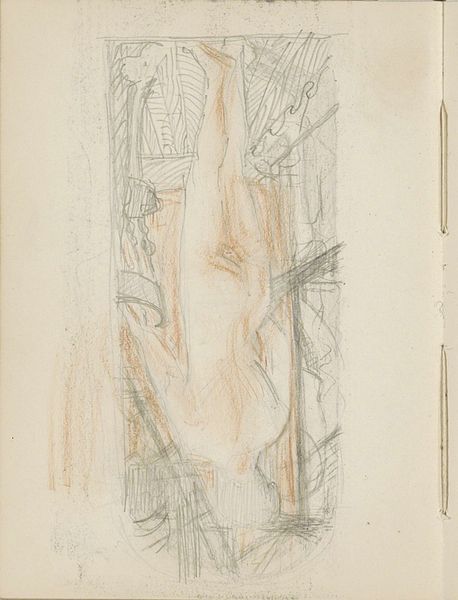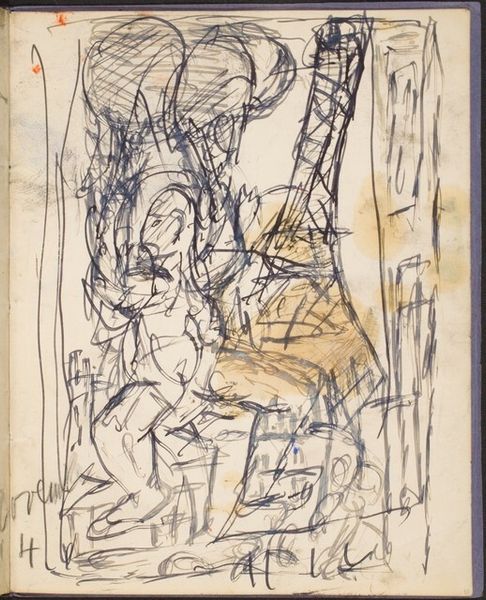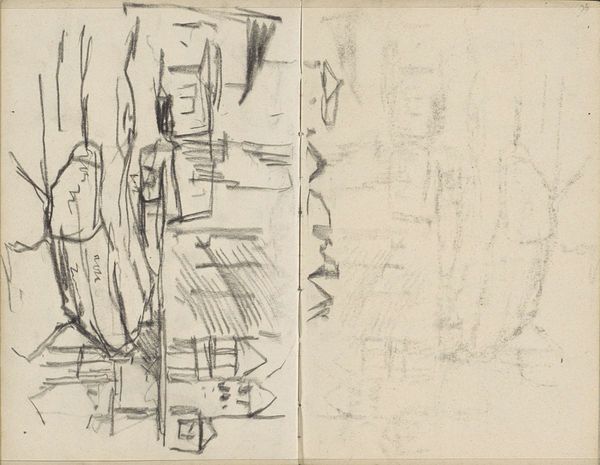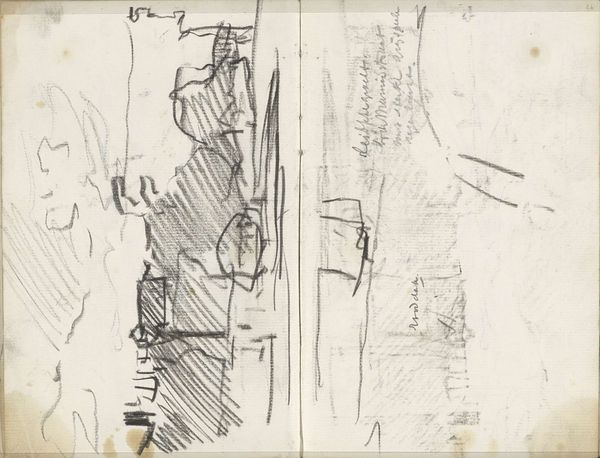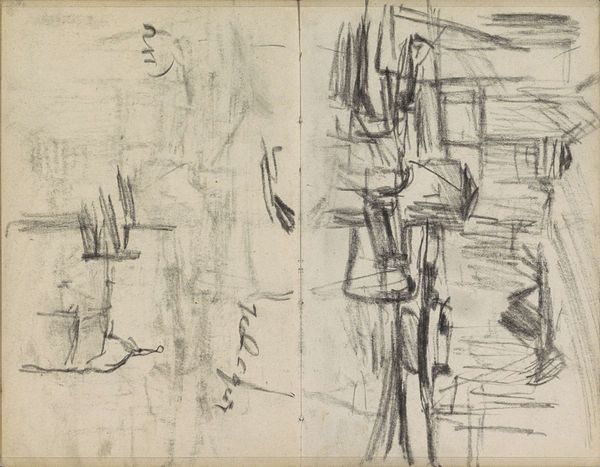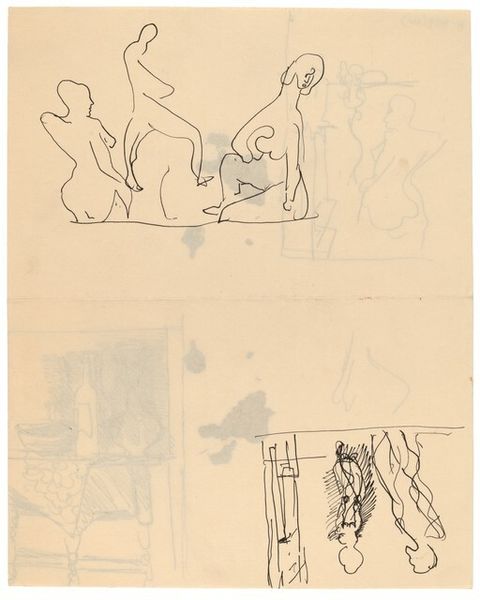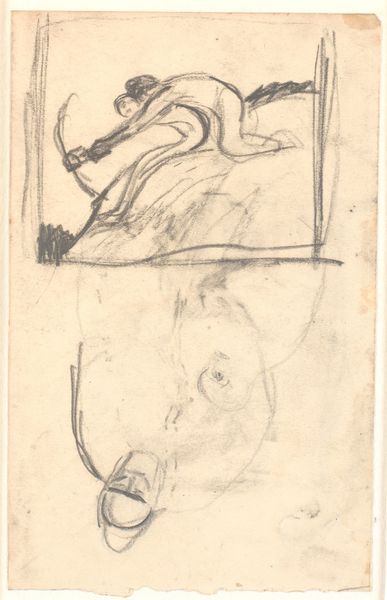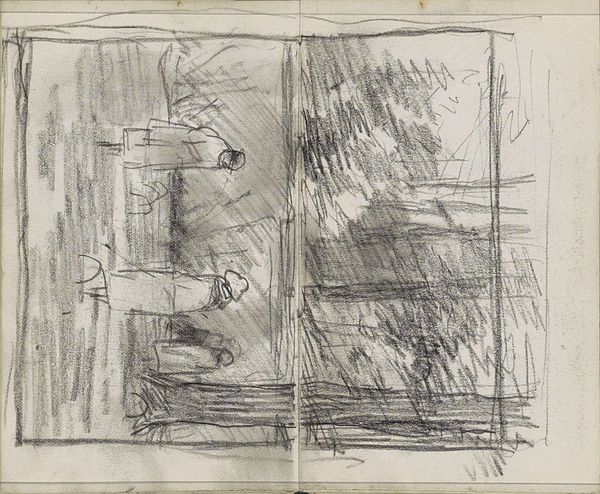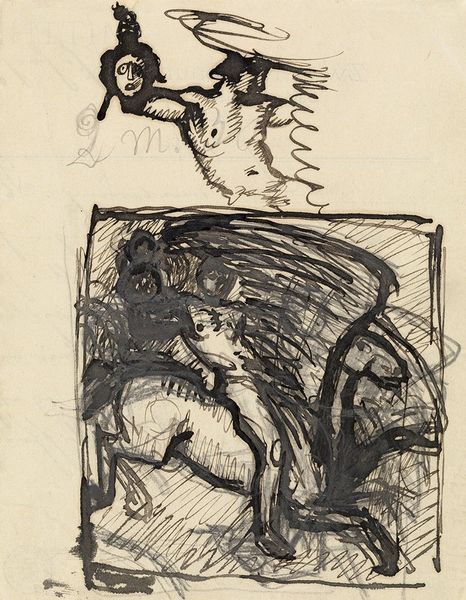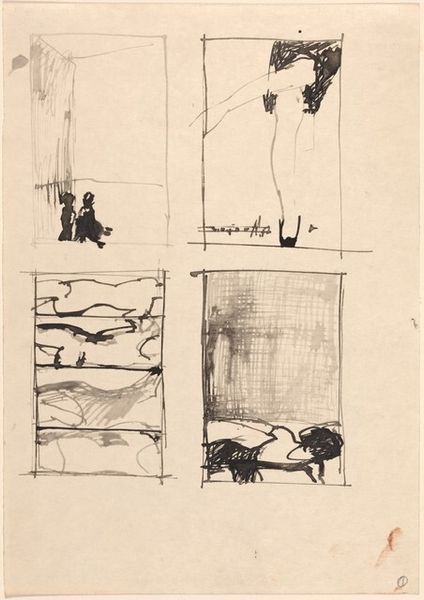
drawing, watercolor, ink
#
drawing
#
ink drawing
#
ink painting
#
landscape
#
figuration
#
watercolor
#
ink
#
symbolism
#
watercolour illustration
#
watercolor
Copyright: Public Domain: Artvee
Curator: This sheet features studies in ink and watercolor for Magnus Enckell's painting "Wounded Nymph," dating to 1912. It provides insight into his process. Editor: My first impression is of fractured beauty—there's a rawness to the composition, an immediacy of the artist capturing fleeting thoughts on paper. Curator: Precisely. Note the overall arrangement; the juxtaposition of the fully realized watercolor studies against the sparser ink sketches reveals a careful choreography of form. The eye is guided across the sheet, contrasting color and line. Editor: Yes, the chromatic intensity of the top watercolor drawing, offset by the monochromic sketches… it creates an almost allegorical tension. A 'wounded nymph' figure repeats in varied stances, like echoes. Do you feel these echoes suggest a psychological undercurrent, perhaps exploring themes of vulnerability or loss? Curator: Undeniably, and consider Enckell’s employment of symbolism: figures within an indeterminate sylvan glade hint towards a deeper narrative. The loose washes serve to dissolve the figures into their environment, making it harder to read any intentional narratives. This blending is enhanced by visible and active linework. Editor: It reads as more than just anatomical study; the 'nymph', with connotations of feminine, nature-based divinity, seems to represent fragility or a damaged aspect of the human soul. Curator: I see the potential interpretations from diverse viewpoints as central to the work’s impact, yet there is an inescapable balance present in the relationship between positive and negative space—a quiet beauty emerges through form. Editor: Yes, though for me it speaks to how deep personal turmoil or emotional vulnerability might find solace or reflection in the natural world. Curator: A fitting perspective; it speaks to the power that archetypes exert in our collective unconscious. Editor: Enckell presents us not with a final solution, but a glimpse into the liminal states where such healing might occur. Curator: Ultimately, "Wounded Nymph" offers the viewer a fascinating case study—literally, on one sheet—of Enckell’s vision in nascent form.
Comments
No comments
Be the first to comment and join the conversation on the ultimate creative platform.
